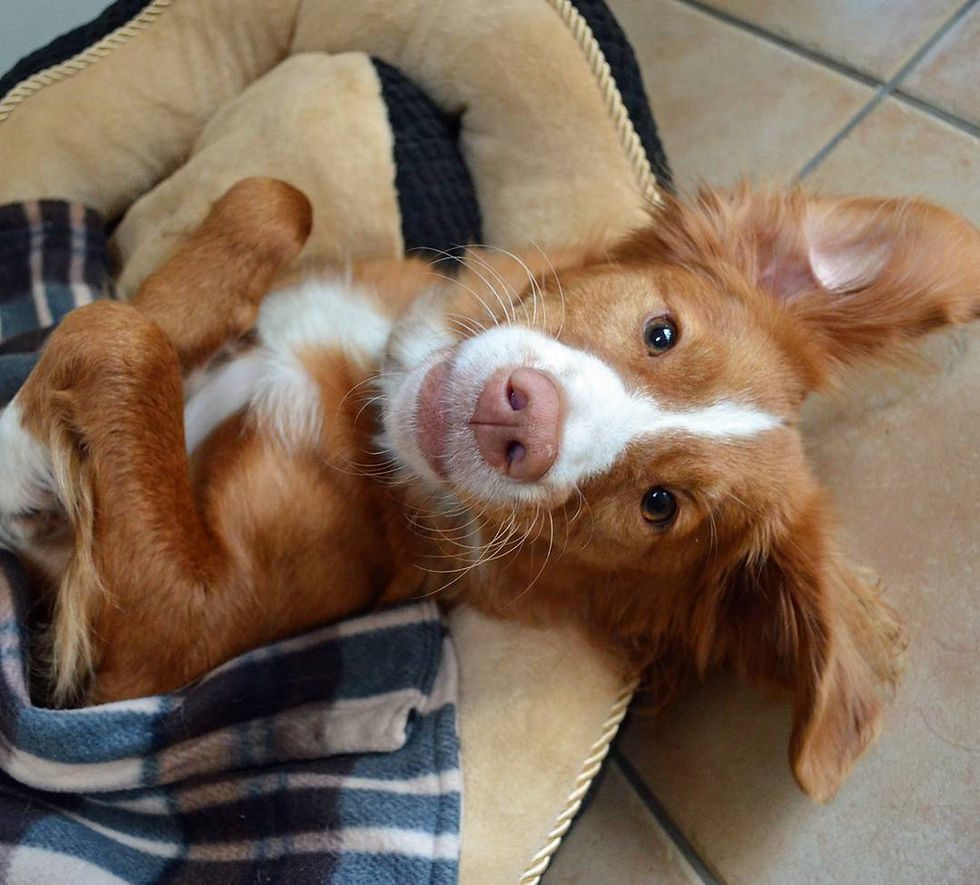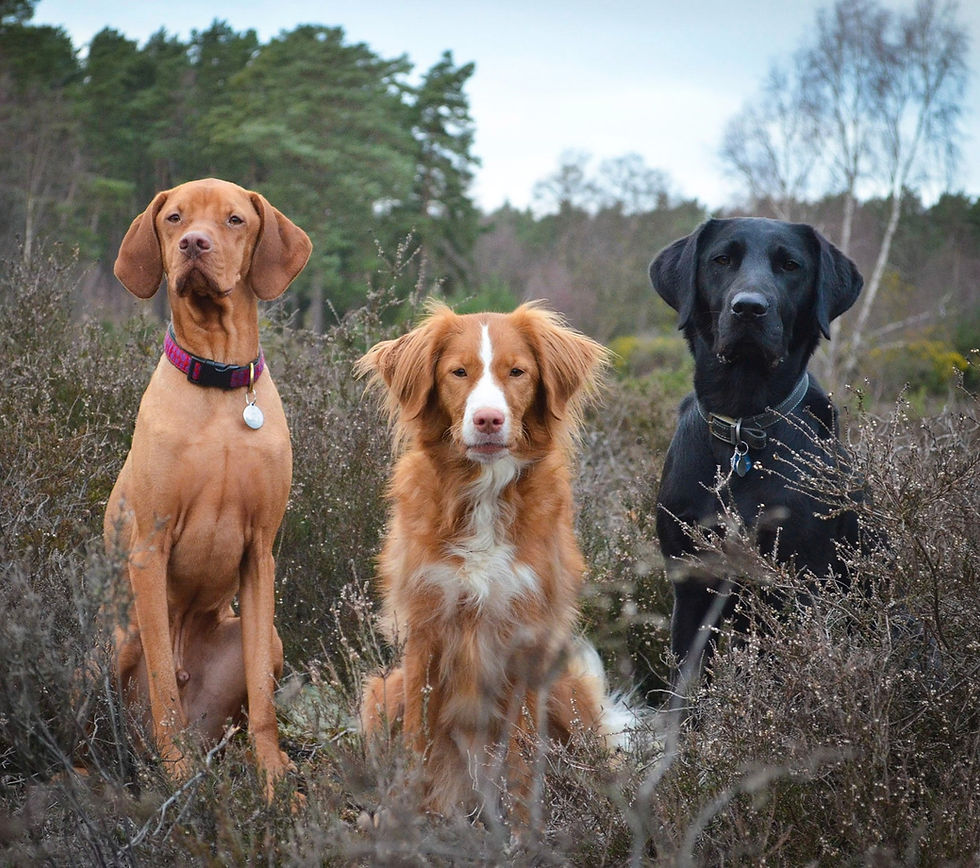Why is my Adolescent Dog a Nightmare: Common Behaviour Changes
- Naomi White

- Jul 1
- 4 min read
Many dog owners breathe a sigh of relief once they’ve cracked toilet training, got their puppy sleeping through the night, and made a good start on training.
But just when things seem to be settling down and you start thinking you’ve nailed dog ownership… BAM! Adolescence hits.
And suddenly, your well-behaved puppy turns into a wild, unpredictable teenager. They stop listening, they push boundaries, and behaviours you thought were behind you start creeping back in. It can feel like it happens overnight. One minute you’re telling everyone how perfect your puppy is, and the next you’re wondering what on earth happened to them.
The adolescent phase is one of the most misunderstood and challenging parts of raising a dog. Yet, it’s also one of the most important.
What Is Dog Adolescence and When Does It Start?
Adolescence typically begins between 5 to 8 months of age and can last up to 18–24 months, depending on breed and individual. Large breeds tend to mature more slowly, while smaller breeds may reach maturity a bit earlier.
During this period, your dog goes through physical, hormonal, and neurological changes. Their brains are essentially being rewired. Much like human teenagers, adolescent dogs are driven to explore independence, test boundaries, and figure things out for themselves.

This is also the age when many dogs are rehomed due to new, unexpected behaviour problems. And this phase can shape a dog’s future behaviour. That’s why understanding adolescence and knowing how to navigate it is so critical.
Common Behaviour Changes in Adolescent Dogs
While every dog is different, there are some typical patterns of adolescent dog behaviour that many owners experience:
Loss of focus or interest: Training sessions and walks suddenly feel like a battle. Your dog might ignore commands they previously listened to reliably.
Increased frustration and impulsivity: Barking, mouthing, or even destructive behaviours can become more common, especially when your dog is over-stimulated or tired.
Higher levels of arousal: Adolescent dogs are easily excited and often struggle to calm down. Anxiety may also increase, making them reactive or fearful in situations they used to handle well.
Fear periods: Many dogs go through ‘secondary fear stages’ where they become scared of things they previously ignored.
Testing boundaries: Your dog may become more independent, stray further from you on walks, or begin to ignore recall cues.
Changes in social behaviour: They may become more interested in other dogs and people, or the opposite, suddenly becoming less tolerant or reactive in social settings.
Don’t Panic, This Is Normal!
The most important thing to remember is that this stage is just that, a phase. Your dog isn’t broken or bad; they’re going through a normal developmental stage.
However, while many behaviours will improve with time, it’s a mistake to assume your dog will simply “grow out of it”. Dogs don’t outgrow behaviour, they grow into what they practice. So while you shouldn’t panic, you also shouldn’t ignore problem behaviours or hope they’ll resolve on their own.
Get Professional Support Early
If your dog’s behaviour starts to concern you, or even just feels confusing or frustrating, don’t wait to reach out to a qualified dog trainer or behaviourist. A professional can provide reassurance, practical strategies, and a clear plan tailored to your dog’s specific needs.
Working with someone experienced in adolescent dog behaviour means you’ll be better equipped to support your dog through this phase without damaging your relationship. For example, shouting at a fearful dog or trying to force them to ‘face their fears’ can backfire badly. With the right guidance, you’ll avoid these common mistakes and build trust instead.
Reintroduce Management Strategies
After surviving the puppy phase, many owners relax their management. They stop using baby gates, let their dog roam more freely, and allow more off-lead time. But adolescence is when management becomes crucial again.
Why? Because adolescent dogs are highly motivated to explore and seek out rewarding experiences, whether you like it or not! That might mean chasing squirrels, chewing your sofa, or ignoring recall because playing with another dog is more fun.

Reintroducing management tools like long lines, crates, safe rooms, and puppy-proofing isn’t a step backwards, it’s a strategic way to prevent bad habits and set your dog up for success. You can reintroduce freedom again gradually, once their behaviour is reliable.
Support Calmness and Focus
One of the biggest challenges during adolescence is over-arousal. Your dog might constantly seem on edge and unable to settle, barking at every noise, jumping on guests, or getting overly excited or stressed on walks.
To help your dog cope, focus on reinforcing calm behaviour:
Encourage rest: Many adolescent dogs struggle to switch off. Ensure they get enough sleep by using a crate or quiet space during the day.
Provide mental stimulation: Calm, enriching activities like scent work, puzzle toys, or gentle training games can help burn energy in a focused, non-frustrating way.
Catch calm moments: Reward your dog when they’re calm, whether lying down on their bed, waiting patiently before a walk, or checking in with you while walking.
This teaches your dog that calm behaviour is worthwhile and helps them regulate their emotions more effectively.
Don’t Forget to Have Fun
When you’re knee-deep in adolescence challenges, it’s easy to feel like everything needs fixing right now. But life with your dog isn’t just about training, it’s about enjoying them, too.
Ask yourself: Does it really matter right now?
If your dog can’t settle in the pub yet, maybe skip it for a while.
If your dog’s recall has slipped, use a longline and find quieter walking routes.
If they’re pulling on the lead down the high street, take the pressure off and walk somewhere easier.
Adjust your expectations to match where your dog is, not where you wish they were. It doesn’t mean you’re giving up on your goals, it means reducing frustration, avoiding unwanted behaviours, and setting up for success!
Adolescence is messy, unpredictable, and at times, incredibly frustrating. But it’s also a chance to grow your bond with your dog and help shape the adult they’ll become.
Be patient, stay consistent, and don’t be afraid to ask for help. With the right approach, this phase can set the key foundation and skills to enable your dog to mature into a well-rounded adult.




As a dog trainer of 39 years experience I found most of the information agreeable. I approach my training method through understanding the dog’s body language. Since we already know can learn numerous words, I thought it was only fair to learn their language. I am writing a book on my method and about understanding the way dogs think.